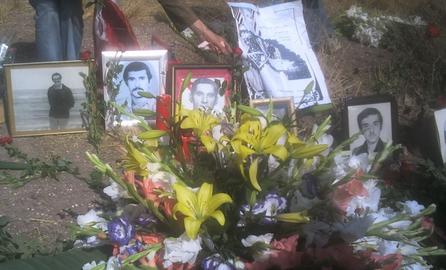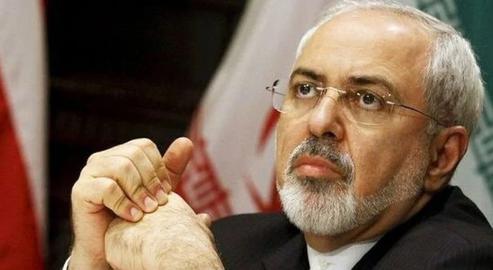The Islamic Republic of Iran is a singular political system in many respects. Over the past 42 years, a considerable number of its officials have faced criminal charges in other countries. What other country’s accredited diplomats have been convicted in a foreign court of law for planning a bomb attack? In what other country are citizens fighting to hold their own head of state and president accountable for shooting down a civilian passenger plane?
Time and again, Iranian officials have sought either to justify these acts of criminality, or to portray them as a “holy” endeavor: one enacted in the name of preserving Islam and the Islamic state. In this series of articles, entitled Holy Terror, IranWire reviews the characteristics of this astonishing pattern of behavior over the decades.
***
In 1988, toward the end of the Iran-Iraq War, Ayatollah Ruhollah Khomeini ordered the secret mass execution of thousands of political prisoners. Most were leftists, and many were members of the controversial People’s Mojahedin Organization (MEK), which had sided with Iraq under Saddam Hussein during the war. Acting on Khomeini’s behalf, a small group of high-ranking officials visited Iran’s prisons and subjected the prisoners — most of whom Iran’s judiciary had already sentenced to prison terms — to ideological tests. Those deemed unlikely to recommit themselves to Islam and Khomeini were sent to be executed in groups and then buried in secret.
Ayatollah Hossein Ali Montazeri, once heir apparent to Ayatollah Khomeini, called the killings “the biggest crime in the Islamic Republic – a crime that will condemn us all in history.”
Montazeri was right. More than 30 years later, not only has history not forgotten this horrifying massacre, but further information is being uncovered. The public is learning more and more. The skeletons that were hidden to protect those responsible are now coming out of the closet.
Until a few years ago, not many Iranians knew much about the massacre: it was a taboo subject. However, the 2017 presidential campaign changed this. Ebrahim Raeesi was put forward as a presidential candidate to rival President Rouhani, who was running for reelection. Rouhani implicitly accused Raeesi of not knowing how to do much beyond executing people. Raeesi had been a member of the “Death Panel,” a group composed of judiciary officials that Ayatollah Khomeini authorized to decide which political prisoners were to be executed and, in the summer of 1988, the last year of Khomeini’s life, they ordered the execution of thousands of political prisoners. The panel spent only a few minutes questioning each prisoner and if it decided that the prisoner must die, he or she was immediately sent to face the firing squad instead of returning to prison.
Raeesi lost the election in 2017 but, in 2019, the Supreme Leader appointed him as the new head of the Iranian judiciary, giving this member of the Death Panel the auspicious and powerful role of Chief Justice of the Islamic Republic.
In 1988, social media did not exist. But today, his secret is out and there is not much he can do to hide what he has done.
Almost every day a family member of the 1988 victims posts another horror story on social media. When security agents harass mourners gathered over the unmarked graves of their loved ones, the news spreads across the internet. Now, with the arrest and impending trial of Hamid Nouri, who has been charged with five counts related to the 1988 mass execution, the tragedy has attracted international attention and non-Iranians are learning about it as well.
No Longer Too Late
Because of the statute of limitations, is it too late to bring those responsible to justice? Not at all. Many of the culprits are still alive and, what is more, some are currently holding official office in the Islamic Republic, within the judiciary and elsewhere.
The arrest of Hamid Nouri in Sweden is a significant harbinger. The arrest shows that even though it might be impossible to prosecute these criminals in Iran, the situation outside the Islamic Republic is different. Under the concept of universal jurisdiction, if courts in a country such as Iran are unable or unwilling to investigate and prosecute certain crimes including crimes against humanity, war crimes, genocide, and torture, plaintiffs can seek justice in another country with an unbiased judiciary. One of the most famous cases is the 1998 indictment and arrest of General Augusto Pinochet, the former Chilean dictator.
What has happened to Hamid Nouri in Sweden could also happen to every other individual responsible for the 1988 massacre. The principle of “universal jurisdiction” is a response to the judiciaries of countries that cannot or will not prosecute criminals accused of crimes against humanity. The judiciary of the Islamic Republic, of course, is neither independent nor unbiased and refuses to handle such cases for obvious political reasons. Therefore, Iran is a perfect candidate for the principle of universal jurisdiction. Furthermore, given the Iranian judiciary’s record, there is no hope that this situation will change in the foreseeable future.
UN Calls for Accountability
The revived domestic and new international attention being paid to the 1988 massacre of political prisoners has been a turning point; it has led to an unprecedented event in the history of the Islamic Republic. In a letter to the government of Iran, a group of UN human rights experts have warned the Iranian government that past and ongoing violations related to prison massacres in 1988 may amount to crimes against humanity and that they will call for an international investigation if these violations persist. In their 18-page communique, which was first sent privately to the Iranian government on September 3, 2020, the UN experts state that they “are seriously concerned by the alleged continued refusal to disclose the fate and whereabouts” of these individuals.
They write that they “are further alarmed by the authorities’ refusal to provide families with accurate and complete death certificates, the destruction of mass graves, the ongoing threats and harassment of the families, the lack of investigation and prosecution for the killings, and the statements from the government denying or trivializing the cases and equating criticizing the killings as support for terrorism.”
Consistent with their calls for thorough, impartial and independent investigations into all cases, the exhumation and return of remains to families, the identification and prosecution of perpetrators, and the provision of effective remedy for the victims, the UN human rights experts have asked Iran to provide detailed information regarding the treatment of graves and the protection of the rights of the victims’ “families and human rights defenders who seek information on the fate and whereabouts of victims of enforced disappearances and who demand justice.”
The UN experts also stated that if the Iranian government “continues to refuse to uphold its obligations under international human rights law,” they “will call on the international community to take action to investigate the cases including through the establishment of an international investigation.”
If the UN declares the 1968 mass execution a “crime against humanity,” the Security Council might decide to set up a formal international tribunal to investigate criminal charges against officials of the Islamic Republic. Precedents include the 1993 International Criminal Tribunal for the former Yugoslavia, the 1995 tribunal for Rwanda and the 2007 Special Tribunal for Lebanon.
Until such a time as this happens, the victims ought to preserve any and all evidence about the victims and those responsible and, if possible, file complaints with European and American courts via working groups based outside Iran.
The families of Ukrainian International Airlines flight PS752, which was shot down over Tehran in January 2020, have taken this course of action in the United States and Canada. The laws of some countries allow the trial of defendants in absentia and if the suspects are found guilty, these countries can ask for international arrest warrants and the extradition of the guilty individuals.
Crimes against humanity are not subject to the status of limitations. Court proceedings under universal jurisdiction make it more costly for the perpetrators to repeat such crimes, and if these perpetrators leave Iran they could be arrested and face justice.
Related Coverage:
Date Set for Trial of Iranian Accused in 1988 Massacre
Iran Still Haunted by its “Biggest Crime”: the 1988 Prison Massacre
visit the accountability section
In this section of Iran Wire, you can contact the officials and launch your campaign for various problems


























comments